Dataset:
The PV Yield (kWh) is my output. My model is suppose to predict this. This is what I have done. I have attached the image of the dataset. From AirTemp to Zenith is my X and Y is PV Yield(KW/H).
df=pd.read_csv("Data1.csv")
X=df.drop(['Date-PrimaryKey','output-PV Yield (kWh)'],axis=1)
Y=df['output-PV Yield (kWh)']
pca = PCA(n_components=9)
pca.fit(X_train)
X_train = pca.transform(X_train)
pca.fit(X_test)
X_test = pca.transform(X_test)
#normalizing the input values to fall in -1 to 1
X_train = X_train/180000000.0
X_test = X_test/180000000.0
#Creating Model
model = Sequential()
model.add(Dense(15, input_shape=(9,)))
model.add(Activation('tanh'))
model.add(Dense(11))
model.add(Activation('tanh'))
model.add(Dense(1))
model.summary()
sgd = optimizers.SGD(lr=0.1,momentum=0.2)
model.compile(loss='mean_absolute_error',optimizer=sgd,metrics=['accuracy'])
#Training
model.fit(X_train, train_y, epochs=20, batch_size = 50, validation_data=(X_test, test_y))
My weights are not getting updated. Accuracy is zero in all epochs.
